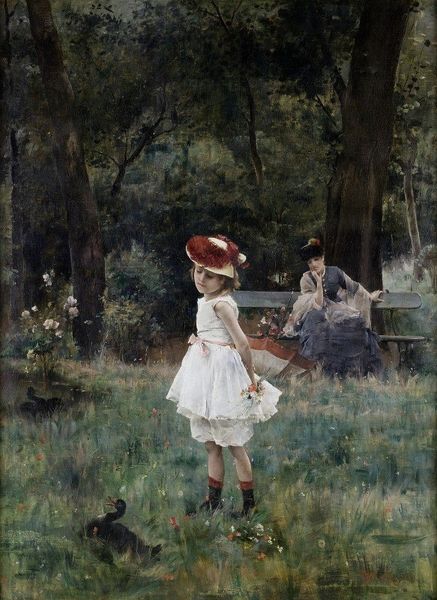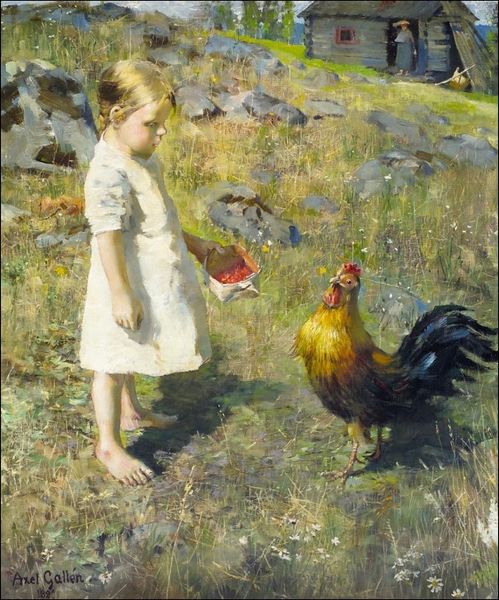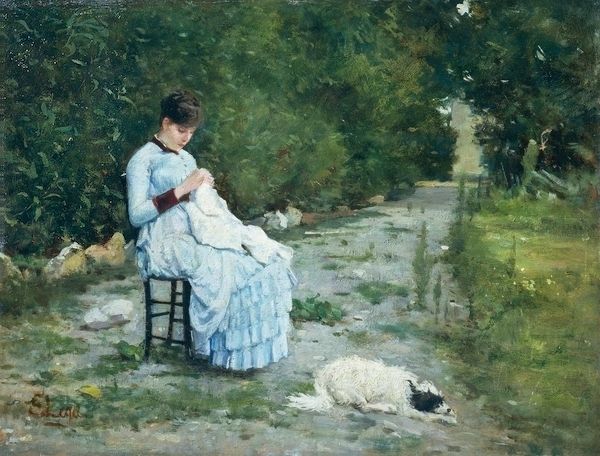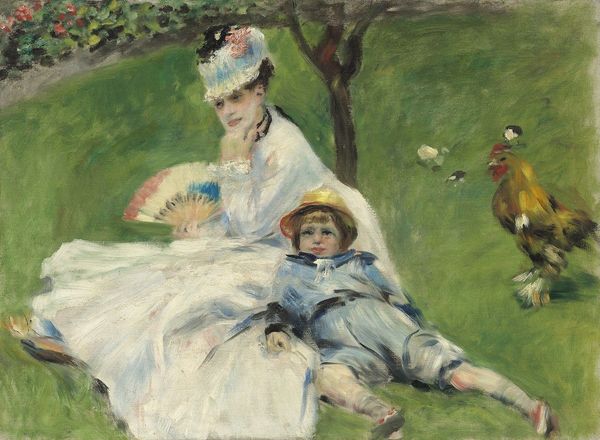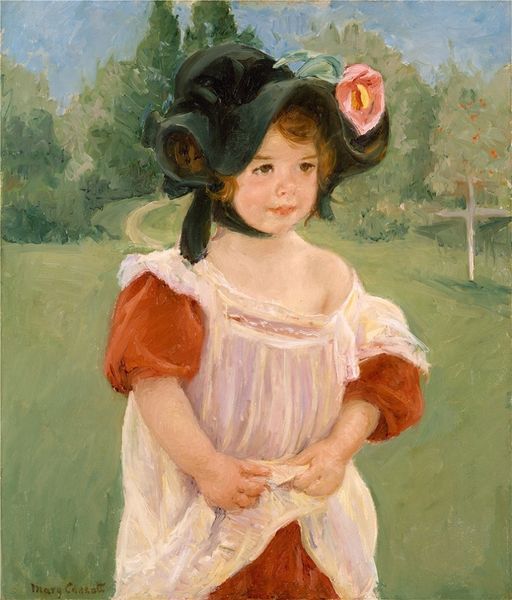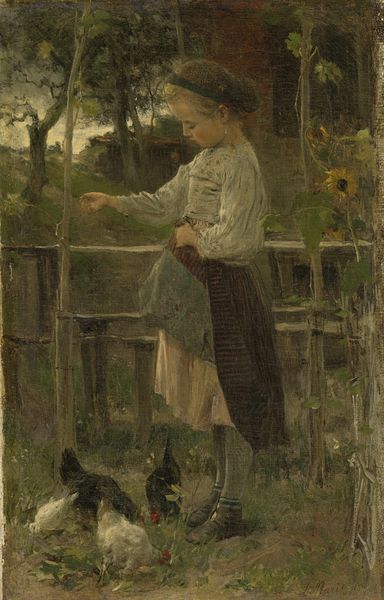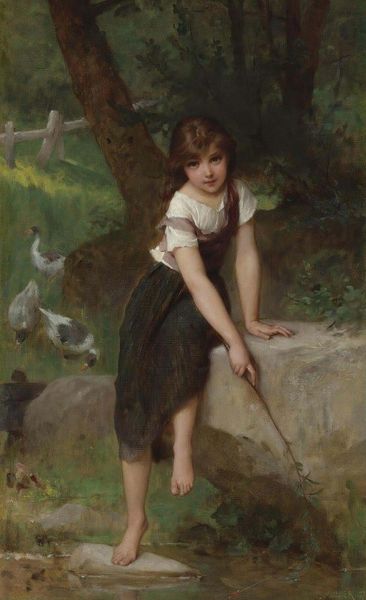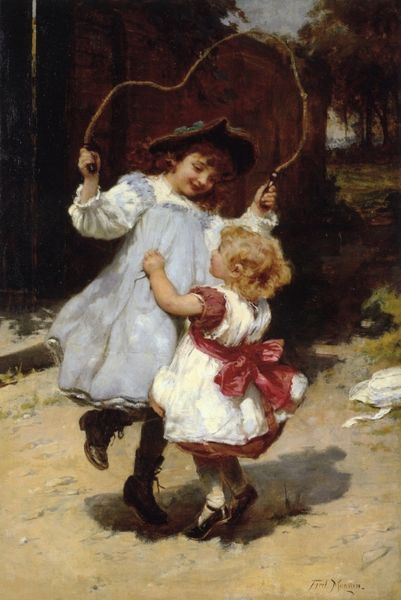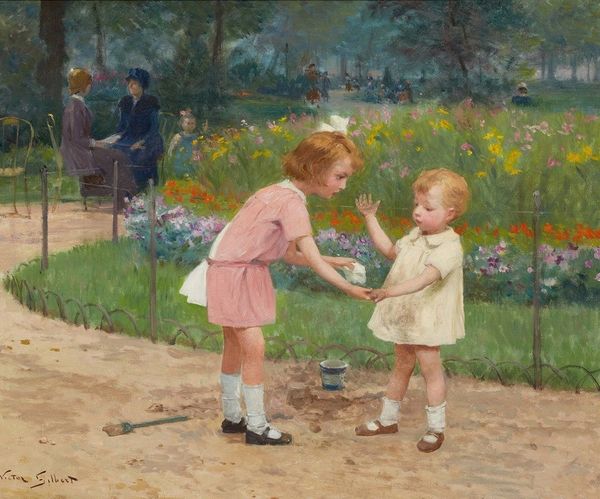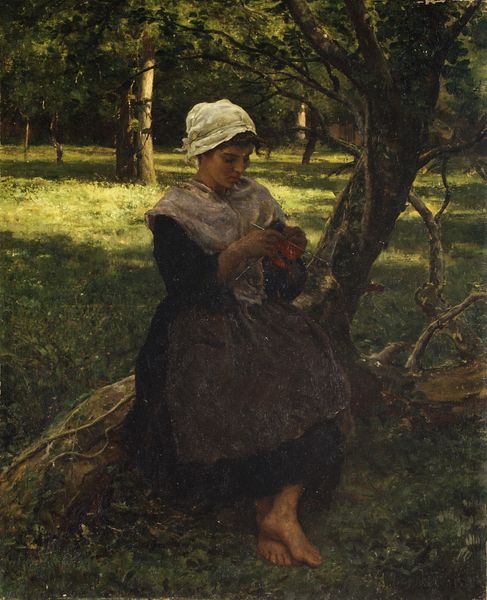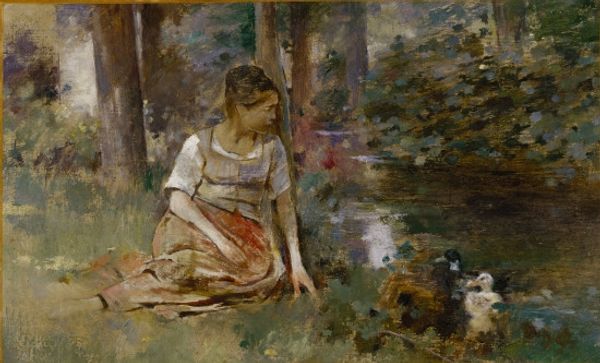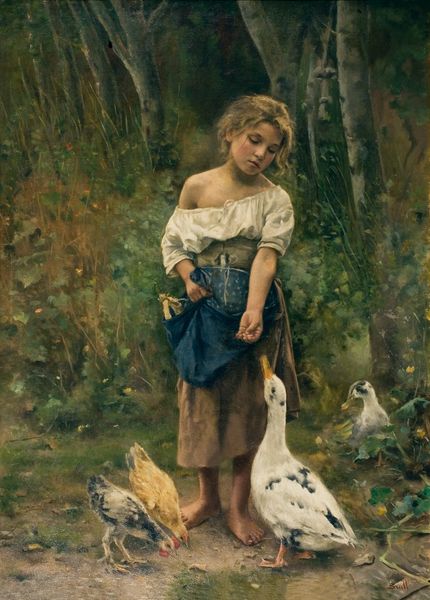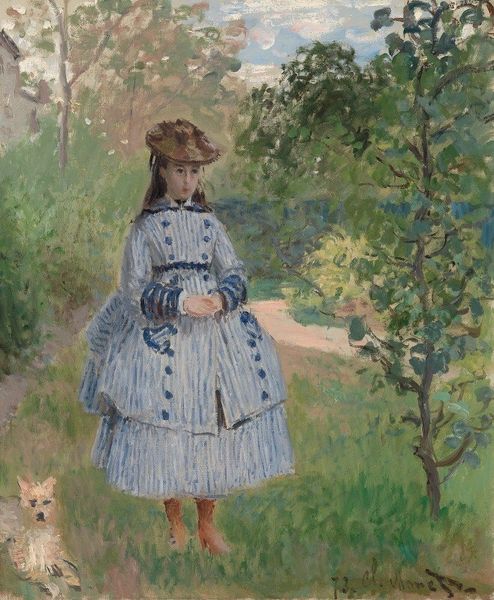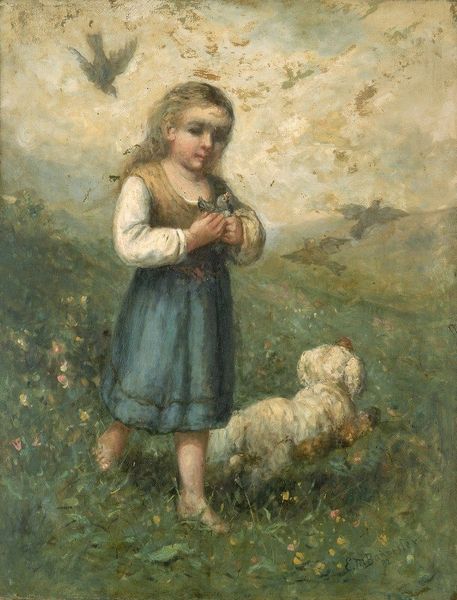
Copyright: Public domain
Editor: So here we have "Feeding the Chickens," an 1895 oil on canvas by Károly Ferenczy. It's a really lovely scene—makes me think of lazy summer afternoons. What do you make of it? Curator: As a materialist, my interest lies in how Ferenczy uses the plein-air style to capture not just a fleeting moment, but also the social conditions embedded in that moment. Think about the labour involved. Someone had to cultivate the land visible in the painting, grow the feed for the chickens, make the child’s dress. Editor: I see your point about the social context. I was mostly drawn to the girl and the impressionistic light. Does that light also factor into your analysis? Curator: Definitely. The dappled light achieved through his technique highlights the labour of representing nature, revealing the artist’s choices in depicting this scene. He is purposefully obscuring, or drawing attention to certain elements using those techniques. How do those artistic choices position the viewer in relation to the subject matter? Are we meant to romanticize or critique the lifestyle depicted? Editor: It's fascinating how you connect the artistic style with the underlying labor and economic factors. I never thought about it that way! Curator: Precisely. By analyzing the materials and methods of production – both within the painting's subject and the painting itself – we gain a more nuanced understanding of its meaning. Editor: I see now. The seemingly simple act of a girl feeding chickens is actually layered with complex social and economic implications, especially when we consider the production processes that enable the existence of the scene. Curator: Exactly. And that’s why this artwork can speak volumes if we consider not only what is represented but also how and why.
Comments
No comments
Be the first to comment and join the conversation on the ultimate creative platform.
